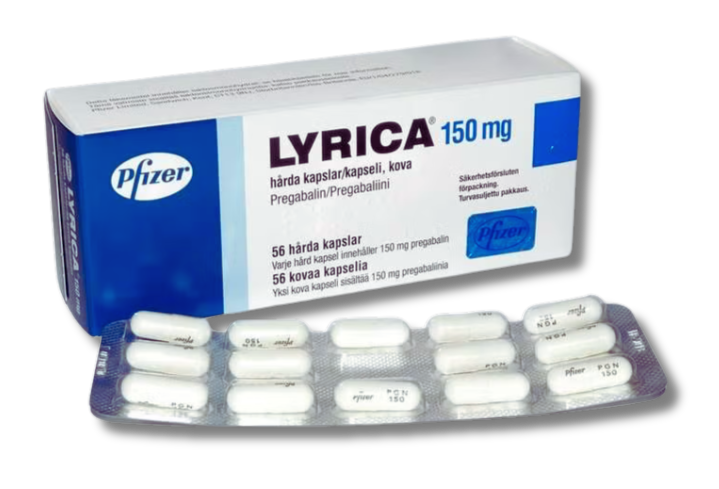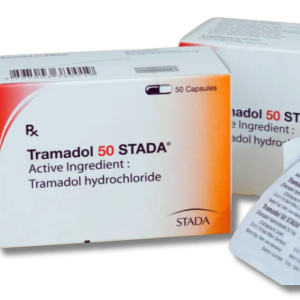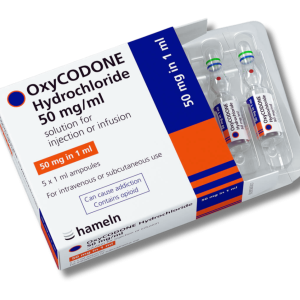Description
Pregabalin is a prescription medication that doctors use to treat nerve pain, epilepsy, and anxiety disorders. It belongs to a group called gabapentinoids and works by blocking certain calcium channels in the nervous system.
This medicine reduces nerve pain, controls seizures, and manages anxiety symptoms. Millions of patients worldwide rely on it for relief.
The medication comes in different strengths and forms, like capsules, tablets, and liquid. Lyrica is the most widely recognised brand name for pregabalin.
Patients usually take pregabalin by mouth. The effects often start within a week of beginning treatment.
Knowing how pregabalin works, the right way to take it, and what side effects to watch for is important. Patients and healthcare providers benefit from understanding both the basics and practical details.
What Is Pregabalin?
Pregabalin is a prescription medicine for nerve pain, epilepsy, and anxiety disorders. Sold under names like Lyrica, it changes how nerves send pain signals to the brain.
Overview of pregabalin and its role as a medicine
Pregabalin is an anticonvulsant that treats several conditions. Doctors often prescribe it for nerve pain from diabetes, shingles, and fibromyalgia.
It also helps control seizures in people with epilepsy. Pregabalin works as an add-on treatment with other seizure medicines.
In adults, pregabalin treats generalised anxiety disorder. Many patients notice reduced anxiety within a week.
Key medical uses include:
- Diabetic nerve pain
- Post-shingles pain (postherpetic neuralgia)
- Fibromyalgia pain
- Partial seizures in epilepsy
- Generalised anxiety disorder
Patients take pregabalin by mouth as capsules or tablets. Doctors usually start with a low dose and increase it gradually based on how the patient responds and any side effects.
Brand names and available formulations
Pregabalin is sold under several brand names. Lyrica is the most common name in many countries, including the UK.
Other brands include Alzain and various generics. Generic versions have the same active ingredient but usually cost less.
Pregabalin comes in different strengths. Common doses range from 25mg to 300mg per capsule.
Available formulations:
- Hard capsules (25mg, 50mg, 75mg, 100mg, 150mg, 200mg, 225mg, 300mg)
- Film-coated tablets
- Oral solution (in some countries)
All forms require a prescription. Many countries classify pregabalin as a controlled substance due to its misuse risk.
Pharmacological classification and mechanism of action
Pregabalin belongs to the gabapentinoids class. These GABA analogues affect how nerves send signals in the brain and spinal cord.
Its ATC code is N02BF02, which classifies it as an analgesic for nerve pain. Pregabalin also works as an anticonvulsant and anxiolytic.
Pregabalin binds to calcium channels in nerve cells. This action reduces the release of neurotransmitters that carry pain signals and trigger seizures.
Mechanism of action:
- Binds to α2δ-1 protein on calcium channels
- Reduces calcium entry into nerve terminals
- Decreases release of pain neurotransmitters
- Calms overactive nerve signals
Despite being a GABA analogue, pregabalin doesn’t work directly on GABA receptors. Instead, it changes calcium channel activity to achieve its effects.
Main Clinical Uses
Pregabalin is a versatile medication with three main clinical uses. Doctors prescribe it to manage partial seizures, treat neuropathic pain, and address generalised anxiety disorder symptoms.
Epilepsy and partial seizures management
Pregabalin works as an add-on treatment for partial-onset seizures in adults and children. It’s approved for use in patients as young as one month old.
Doctors add pregabalin to other antiepileptic medicines, not as a solo treatment. Studies show it helps reduce seizure frequency when combined with other medications.
Key benefits in epilepsy treatment:
- Reduces partial seizure frequency
- Works alongside other seizure medications
- Approved for paediatric use from one month of age
Healthcare providers usually try pregabalin when other seizure medicines alone don’t work well enough. It helps stabilise abnormal electrical activity in the brain by modulating calcium channels.
Doses for epilepsy range from 150mg to 600mg daily, divided into two or three doses. The right dose depends on how the patient responds and tolerates the medicine.
Neuropathic pain treatment
Pregabalin treats several types of neuropathic pain. This includes pain caused by nerve damage or problems in the nervous system.
Main neuropathic pain conditions:
- Diabetic neuropathy – nerve pain in hands and feet from diabetes
- Postherpetic neuralgia – pain that lingers after shingles
- Fibromyalgia – widespread muscle and nerve pain
- Central pain – pain from spinal cord injuries or stroke
Pregabalin reduces excessive nerve signalling that causes chronic pain. It blocks calcium channels on damaged nerves, lowering the release of pain-causing chemicals.
Clinical trials show that 30-50% of patients with these conditions experience significant pain reduction. Many also notice better sleep and daily function.
Doctors usually start with lower doses and increase as needed. Most people need 150-300mg daily for pain relief, though some require up to 600mg.
Pregabalin in generalised anxiety disorder
Doctors prescribe pregabalin for generalised anxiety disorder (GAD) in adults. It helps reduce worry, restlessness, and physical symptoms of anxiety.
GAD involves ongoing, excessive anxiety about many areas of life. Symptoms include muscle tension, fatigue, trouble concentrating, and sleep problems.
Symptoms pregabalin addresses:
- Excessive worry and fear
- Physical tension and restlessness
- Sleep problems
- Difficulty concentrating
Most patients feel calmer within a week of starting treatment. Pregabalin affects brain chemicals involved in anxiety, but doesn’t have the dependence risks of some other anxiety drugs.
Effective doses for GAD usually range from 150-600mg daily, split into two or three doses. Patients can take it with or without food, but sticking to a routine helps keep levels steady.
How to buy Pregabalin online without risk
Pregabalin is a prescription-only medicine in the UK. Patients can’t legally buy it without a valid prescription from a healthcare professional.
If you’re considering buying pregabalin online, make sure the pharmacy is legitimate. All legal online pharmacies require a prescription before they’ll send the medication.
Essential safety checks for online purchases:
- Check pharmacy credentials on the General Pharmaceutical Council (GPhC) website
- Look for NHS logos or official endorsements
- Confirm the site asks for a real prescription
- Read customer reviews for reliability
- Make sure there’s clear contact information
Don’t trust websites offering pregabalin without a prescription. These sites often sell fake or dangerous medications that can seriously harm your health.
Licensed online pharmacies in the UK follow strict rules. They usually offer pregabalin in 75mg, 150mg, and 300mg capsules or tablets.
Talk to your GP or healthcare provider first. They’ll decide if pregabalin is right for you and give you a prescription if needed.
Warning signs of unsafe online pharmacies:
- No prescription required
- Suspiciously low prices
- No contact details
- Poor website quality
- No regulatory information
Legal online pharmacies provide tracked delivery. They also offer professional support and advice about using your medicine safely.
Dosing, Administration, and Patient Guidance
Dosing for pregabalin depends on the condition being treated. Most patients start with a low dose, which doctors increase gradually.
Recommended dosing and titration
Neuropathic pain treatment usually starts at 75 mg twice daily. If needed, doctors may increase this to 150 mg twice daily within a week.
After 2-3 weeks, if pain relief isn’t enough, the dose may go up to 300 mg twice daily. The maximum recommended dose is 600 mg per day.
Diabetic neuropathy sometimes requires different starting doses. Immediate-release forms begin at 50 mg three times daily, increasing to 100 mg three times daily within a week if needed.
Extended-release tablets start at 165 mg once daily after dinner. This can go up to 330 mg once daily within a week.
Fibromyalgia treatment starts at 75 mg twice daily. Most patients increase to 150 mg twice daily within a week, with possible further increases to 225 mg twice daily.
The maintenance dose for fibromyalgia is usually 300-450 mg per day. Doses above 450 mg daily aren’t recommended—higher amounts just add side effects, not benefits.
Epilepsy treatment starts at 150 mg daily in 2-3 divided doses. Doctors increase the dose weekly, up to 600 mg daily, depending on how the patient responds.
Guidelines for administration and missed doses
Immediate-release tablets can be taken with or without food. Patients should split their daily dose into 2-3 even portions.
If you miss a dose, take it as soon as you remember. But if it’s almost time for your next dose, just skip the missed one—don’t double up.
Never take two doses together to make up for a missed dose.
Extended-release tablets are a bit different. Swallow them whole—don’t split, crush, or chew them.
Take extended-release tablets at the same time each day, ideally after the evening meal.
If you miss an extended-release dose, you can take it at bedtime with a snack. If you only remember in the morning, take it with breakfast.
If you miss both opportunities, skip the dose and resume your regular schedule in the evening.
Advice from the patient information leaflet
The patient leaflet warns that pregabalin can cause drowsiness, blurred vision, and dizziness. Avoid driving or using machinery until you know how it affects you.
Don’t mix pregabalin with alcohol or other drugs that slow your nervous system—they can make side effects worse.
Never stop pregabalin suddenly. If you need to stop, your doctor should help you taper off over at least a week.
Contact your doctor right away if you feel depressed, have mood changes, or start thinking about self-harm.
See a doctor immediately if you notice vision problems, unexplained muscle pain, tenderness, or weakness—especially if you also have a fever or feel unwell.
Tell your doctor if you’re pregnant, planning pregnancy, or breastfeeding before starting pregabalin.
Some patients need regular check-ups, especially if they’re at risk for weight gain, take diabetes medicines, or have heart failure.
Side Effects, Interactions, and Safety Precautions
Pregabalin can cause side effects from mild to serious and needs careful monitoring for dependence. The medicine interacts with several drug classes, especially central nervous system depressants, and requires special care in certain patients.
Common and serious adverse reactions
Common side effects hit a lot of people who take pregabalin. Dizziness shows up in about 30% of users, but it often fades after a couple of weeks.
Drowsiness is another big one. It can mess with daily stuff like driving or using heavy equipment.
Weight gain happens to many. On average, people put on between 2 and 6 kg during treatment.
Peripheral oedema means swelling in the hands, feet, or ankles. Older adults seem to get this more often.
Blurred vision sometimes pops up, especially when starting or upping the dose.
Serious adverse reactions need fast medical help. Watch for:
- Severe allergic reactions—swelling of the face, lips, or throat
- Suicidal thoughts or sudden mood swings
- Severe dizziness that leads to fainting
- Muscle pain with weakness and fever
Some people feel euphoria—a kind of “high.” That could be a sign of misuse risk.
Potential for dependence and misuse
Pregabalin counts as a controlled substance because people can abuse it. Even at normal doses, some become physically dependent.
Euphoria hits about 4% of users. That pleasant buzz might tempt those with a history of substance abuse.
Withdrawal symptoms can show up if you stop suddenly. Anxiety, nausea, headaches, and sleep trouble are common complaints.
Tolerance sometimes builds up. People may feel like they need more to get the same relief.
Risk factors for dependence include:
- Past substance abuse
- Mental health struggles
- Taking more than prescribed
- Crushing or injecting capsules (definitely not recommended)
Doctors keep an eye out for signs of misuse. Tapering the dose helps avoid withdrawal when stopping pregabalin.
Key drug interactions and contraindications
Central nervous system depressants can be a bad mix with pregabalin. Combining them might cause extreme drowsiness or slow your breathing.
Opioids like morphine raise the risk even more. The combo can dangerously slow breathing or worse.
Benzodiazepines add to pregabalin’s sedative effects. Anyone on both needs close monitoring.
Alcohol makes drowsiness and dizziness worse. Best to avoid or at least limit drinking while on pregabalin.
Other risky combos include:
- Sleeping pills
- Muscle relaxants
- Cold or allergy meds that make you sleepy
Contraindications are pretty limited. Don’t take pregabalin if you’re allergic to it.
Your kidneys clear pregabalin. If you have kidney problems, your doctor will probably lower your dose.
Precautions for special populations
Elderly patients tend to get more side effects, especially dizziness and swelling. Lower starting doses help reduce these risks.
Older adults also see more weight gain and fluid retention. Regular check-ins can catch these issues early.
Pregnant women should only use pregabalin if the benefits beat the risks. It crosses the placenta and might affect the baby.
Breastfeeding mothers pass some pregabalin to their babies through breast milk. Doctors weigh the pros and cons carefully.
Patients with kidney disease need dose adjustments. Since the kidneys get rid of pregabalin, less function means lower doses.
People with heart conditions might see more fluid retention. Keeping an eye on weight and swelling is important.
Anyone with mental health concerns should be watched closely for mood swings or suicidal thoughts, especially in the first few months.
Frequently Asked Questions
People often wonder about pregabalin’s side effects, what it’s for, dosing, drug interactions, how it stacks up against similar meds, and how it actually helps with pain.
What are the potential side effects associated with Pregabalin usage?
The most common side effects are dizziness and sleepiness. Studies say dizziness happens in about 30% of users, compared to 8% with placebo.
Sleepiness affects around 23% of those on pregabalin, versus 8% on placebo. For some, these fade with time, but others aren’t so lucky.
Other frequent side effects: dry mouth, swollen hands or feet, blurry vision, and weight gain. Trouble concentrating can also happen.
Serious side effects mean you should get help right away. Look out for allergic reactions with swelling of the face, mouth, lips, tongue, or throat.
Pregabalin can cause breathing problems and may boost suicidal thoughts or behaviors. If these show up, call your doctor immediately.
In which conditions is Pregabalin considered an effective treatment?
Pregabalin helps with several types of nerve pain. It’s used for fibromyalgia, diabetic nerve pain, and nerve pain after spinal cord injury in adults.
It also treats pain after shingles. In all these cases, damaged or overactive nerves cause ongoing pain.
Pregabalin works as an add-on for partial onset seizures. It’s used with other seizure meds in patients as young as one month old with epilepsy.
Doctors often prescribe it for burning, shooting, or stabbing nerve pain. It’s part of the anticonvulsant family.
What is the recommended dosage range for Pregabalin in various indications?
Most people take between 150mg and 600mg per day, split into two or three doses. The exact amount depends on the condition and how you respond.
For fibromyalgia, the usual starting dose is 150mg daily, taken twice a day. Maintenance doses range from 300mg to 450mg daily, depending on how you do.
For diabetic nerve pain, treatment starts at 150mg daily, divided into three doses. Maintenance is usually 300mg daily.
For nerve pain after spinal cord injury or shingles, the starting point is 150mg daily. Some need up to 600mg per day for good pain relief.
Adults with epilepsy usually start at 150mg daily, split into two or three doses. Maintenance can go up to 600mg per day.
Are there any contraindications for taking Pregabalin with other medications?
Pregabalin has some drug interactions that need attention. Always tell your doctor about every medication, vitamin, or supplement you use.
ACE inhibitors for blood pressure can increase swelling and hives when mixed with pregabalin. This combo needs a doctor’s watchful eye.
Diabetes meds like rosiglitazone and pioglitazone can cause more weight gain and swelling if you’re also on pregabalin. Regular checks are important.
Opioid painkillers, tranquillisers, and anxiety meds ramp up drowsiness and dizziness when used with pregabalin. These can slow your nervous system down too much.
Alcohol and pregabalin don’t mix well. The combo makes sleepiness and dizziness worse.
How does Pregabalin compare with Gabapentin in terms of efficacy and safety?
Both pregabalin and gabapentin are anticonvulsants that treat similar nerve pains. They work by changing how nerves send signals to the brain.
Pregabalin usually needs fewer daily doses than gabapentin because it absorbs better and lasts longer. Most people take pregabalin two or three times a day.
The side effects—dizziness, drowsiness, weight gain—are pretty similar for both. But how people react can vary a lot.
Pregabalin tends to have steadier blood levels and more predictable absorption than gabapentin. That might mean more reliable pain relief for some, though not for everyone.
Is Pregabalin categorised as an analgesic, and how does it function to alleviate pain?
Pregabalin falls under the category of anticonvulsant medications, but it does offer pain relief for certain conditions. It doesn’t work like your typical painkillers.
Instead, pregabalin changes the way nerves send pain messages up to the brain. By reducing the extra electrical signals from damaged nerves, it dials down the pain.
Depending on what’s going on with the patient, pregabalin calms overactive nerves. This can really help with nerve pain that feels burning, shooting, or stabbing.
No one fully understands exactly how pregabalin works. Most research points to it blocking some calcium channels in nerve tissue, which slows down pain signals.
Some people notice pain relief in about a week, but it can take longer for others. Honestly, how fast it works just depends on the individual.



Reviews
There are no reviews yet.